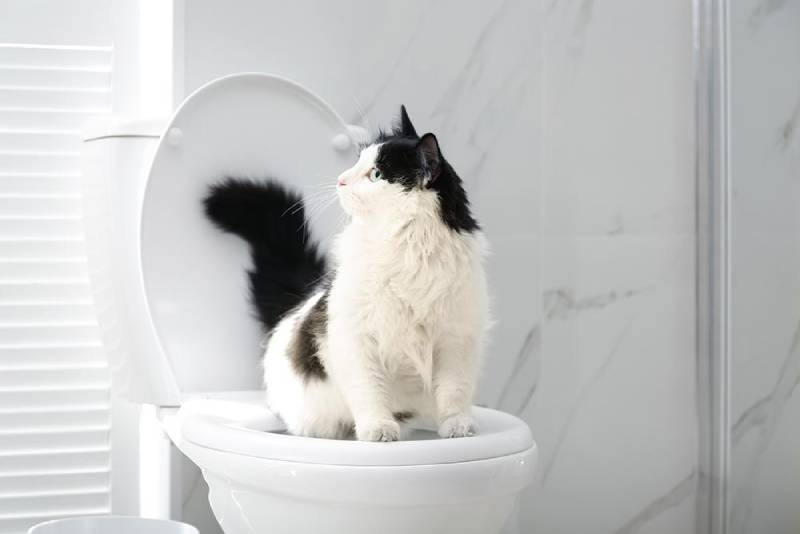Our Perils of Flushing Animal Waste Down the Toilet
Our Perils of Flushing Animal Waste Down the Toilet
Blog Article
The content further down relating to 10 Things You Should Never Flush Down The Toilet is quite enlightening. Give it a go and make your own conclusions.

When it comes to disposing of waste, specifically animal waste, many people usually resort to the practical option of flushing it down the bathroom. Nonetheless, this seemingly simple solution can have severe effects for the environment and public health. In this short article, we'll check out why flushing pet waste down the bathroom is a negative concept and supply different methods for appropriate disposal.
Introduction
Appropriate garbage disposal is crucial for preserving ecological sustainability and public health. While it might appear harmless to purge animal waste down the commode, it can bring about various issues, both for the atmosphere and human wellness.
Threats of flushing pet waste
Ecological influence
Purging pet waste presents harmful germs and microorganisms into waterways, which can negatively impact aquatic communities. These microorganisms can pollute water sources and harm marine life, interfering with fragile environments.
Public health problems
Pet waste includes hazardous bacteria such as E. coli and Salmonella, which can posture severe health threats to human beings. Flushing animal waste down the toilet can infect water materials, bring about the spread of diseases and infections.
Alternatives to flushing
Instead of purging animal waste down the commode, there are numerous alternative disposal methods that are a lot more eco-friendly and sanitary.
Composting
Composting pet waste is an environmentally friendly way to deal with it. By composting, organic matter is broken down into nutrient-rich soil, which can be used to fertilize yards and plants.
Land fill disposal
Dealing with pet waste in a land fill is another option. While not as eco-friendly as composting, it is a much safer option to flushing, as it prevents the contamination of water resources.
Animal garbage disposal systems
There are specific animal waste disposal systems readily available that safely and hygienically deal with pet waste. These systems commonly utilize enzymes to break down waste and remove odors.
Actions to appropriate pet waste disposal
To make sure proper disposal of pet waste, comply with these steps:
Scooping and nabbing waste
Consistently scoop and bag pet waste making use of naturally degradable bags. This avoids waste from contaminating the setting.
Utilizing designated waste containers
Dispose of bagged pet waste in designated waste containers, such as compost bins or land fill bins. Stay clear of flushing it down the commode in all expenses.
Cleansing litter boxes and family pet areas on a regular basis
Routinely tidy litter boxes and pet locations to stop the buildup of waste and germs. Usage pet-safe cleansing items to maintain hygiene.
Advantages of correct disposal methods
Adopting correct disposal approaches for pet waste supplies numerous benefits:
Reduced environmental pollution
Appropriate disposal techniques minimize the danger of environmental pollution, shielding rivers and environments from contamination
Decreased danger of water contamination.
By preventing flushing animal waste down the bathroom, the threat of water contamination is substantially decreased, securing public health.
Improved cleanliness and hygiene
Proper disposal approaches promote better hygiene and hygiene, developing a safer environment for both human beings and animals.
Final thought
In conclusion, purging pet waste down the commode is hazardous to the atmosphere and public health. By taking on alternative disposal methods and following appropriate waste management methods, we can decrease the here negative influence of pet waste and add to a cleaner, healthier earth.
What To Do With Dog Poo – The Do's And Don'ts Of Disposing Of Faeces
Dog poo bins
Some councils provide dedicated dog waste bins in popular dog-walking areas that can take dog poo that has been bagged but you can legally dispose of dog waste in any public litter bin, as long as it is securely bagged. This also applies to your wheelie bin at home.
Do not flush
Water companies do not recommend flushing dog faeces down the toilet because certain parasites can survive the water processing treatment and are potentially harmful to humans. You should also never consider flushing dog poo that has been bagged down the toilet as the bags will not break down and instead create severe blockages in the sewage system.
In the woods
The Forestry Commission promotes a ‘stick and flick’ method for dealing with waste in the woods. This means finding a stick and using it to flick any poo from off the path so that it is out of the way of other walkers. You could also bury it as long as it is not in an area where there might be livestock.
Livestock
Parasites found in dog poo can be transmitted to livestock if they inadvertently eat infected faeces that has been left on grazing land. This could result in the death of sheep or abortion in cattle so you should always make sure you pick up your dog’s waste in fields where livestock could be present.

As a serious reader about , I assumed sharing that portion was beneficial. In case you appreciated our post please be sure to share it. Bless you for your time. Don't forget to pay a visit to our site back soon.
Website Report this page